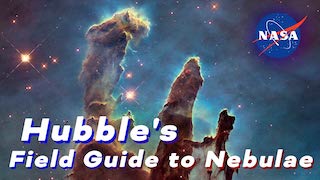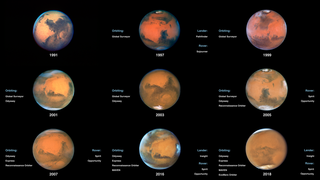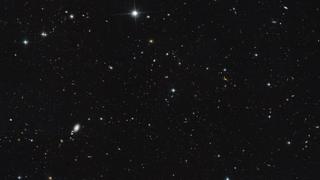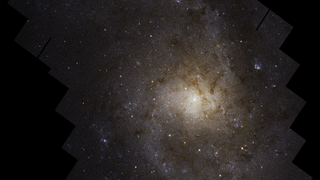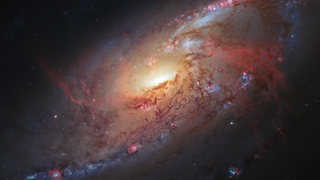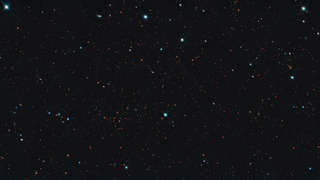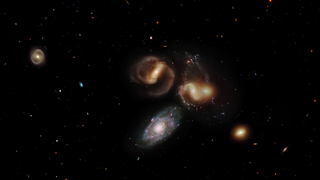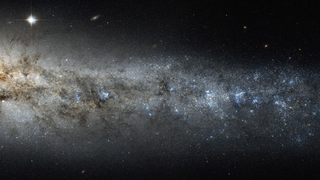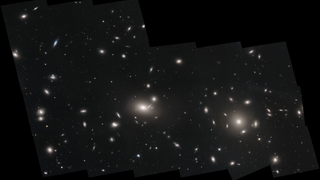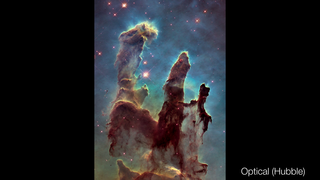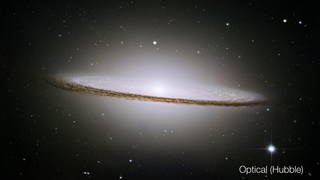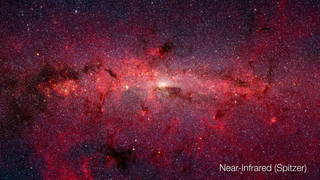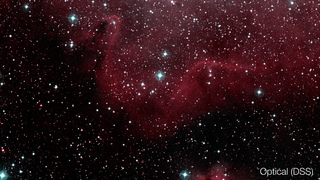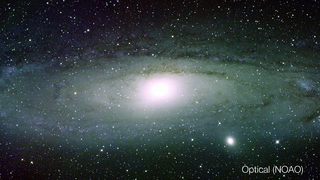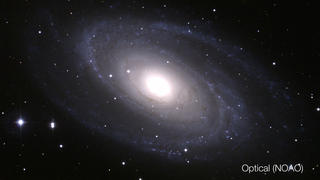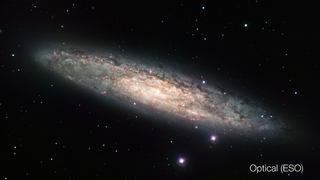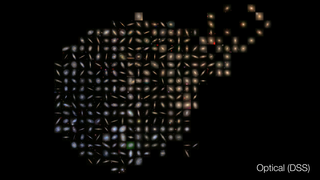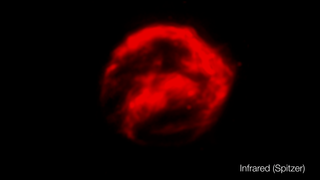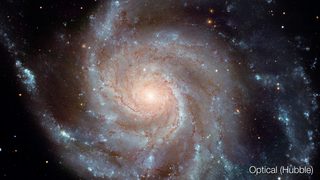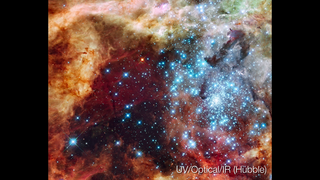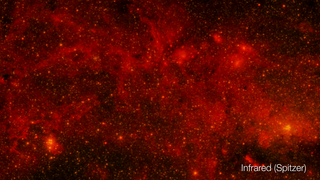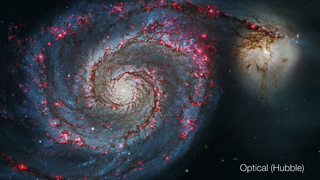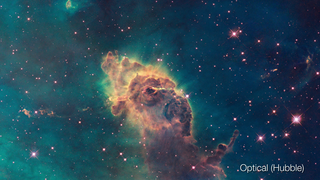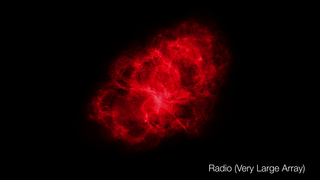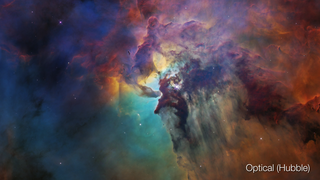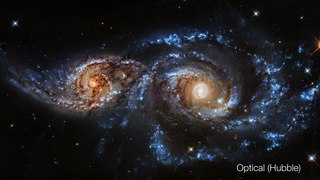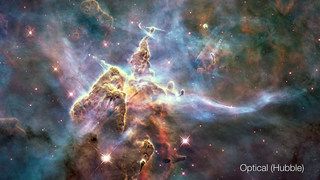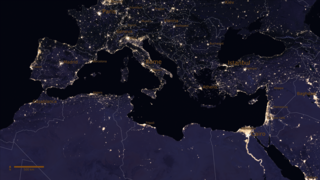Universe
ID: 30960
The Pillars of Creation are revealed as the most persistent remnant of a once cocooned giant star forming nursery, although an even more slender pillar remains far to the left of the famous trio, and a massive promontory remains above them. All Pillars are aimed toward the massive star cluster to the upper right of the Pillars, most visible in X-ray (Chandra). These massive stars have blown open the nursery door. Their powerful stellar winds of charged particles blow away the gas and dust to create a window into the center of the cloud. In the visible (NOAO) image the cloud surface shines where the gas is illuminated, and is shadowed where the light source is blocked. The X-ray (Chandra+XMM) image shows exclusively the most massive stars, which generate the highest energy and powerful winds that excite the X-rays themselves.
In sharp contrast, the mid-infrared image (Spitzer) reveals the cloud material. The blue color represents reflected starlight, while the green color is hydrogen gas, emitting directly from the depths of the cloud. The red haze is warm hydrocarbon dust, filling the cavity, heated by the ultraviolet light from the nearby massive stars. The far-infrared (Herschel) image shows very cold dust, at a chilly few hundred degrees below freezing. It represents cloud material that has yet to coalesce into stars or be blown away. This image most closely resembles the cavern in which the massive stars have carved out space. Finally, the visible (ESO) image shows where the stars illuminate portions of the cloud and leave shadows.
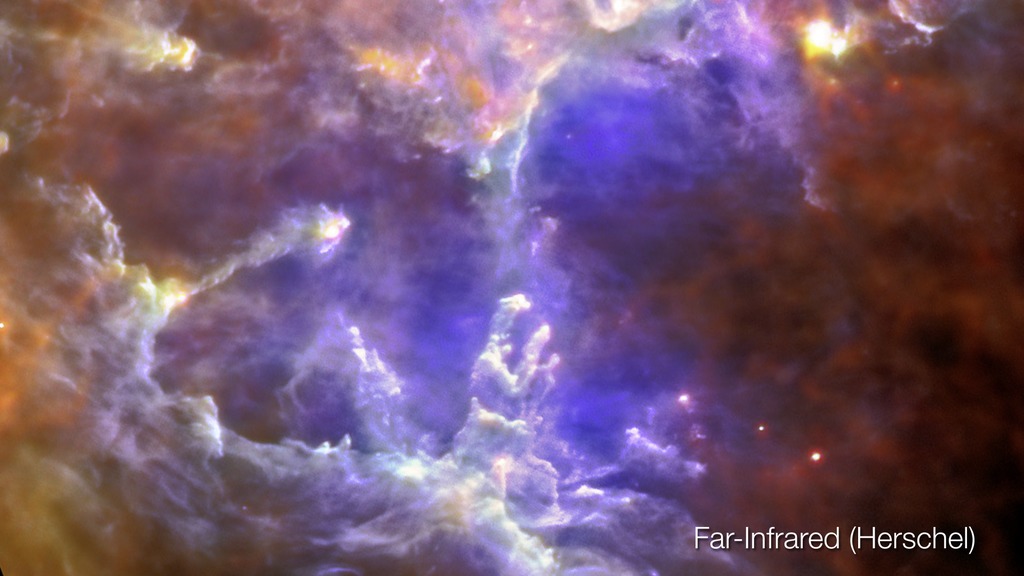
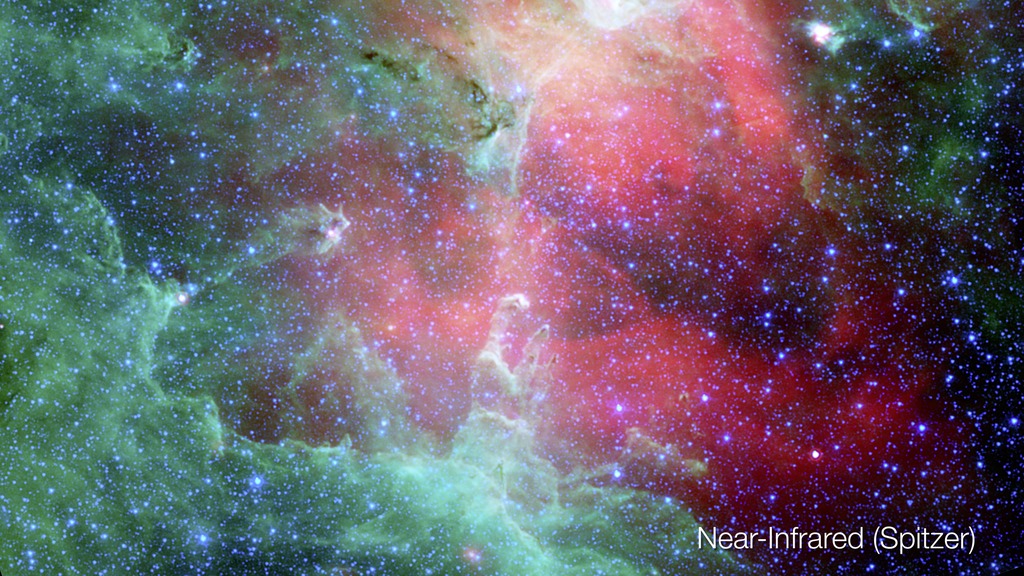
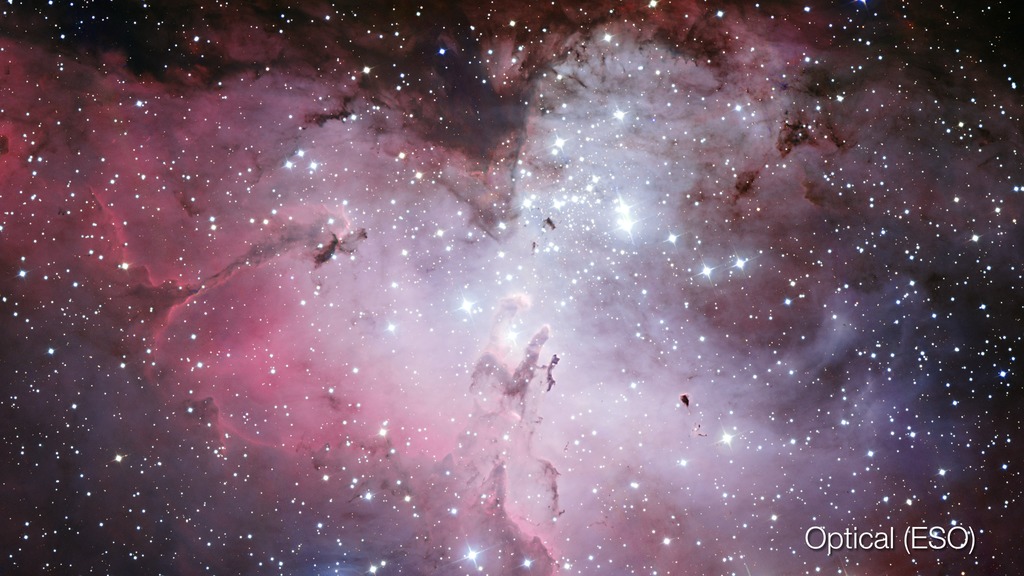
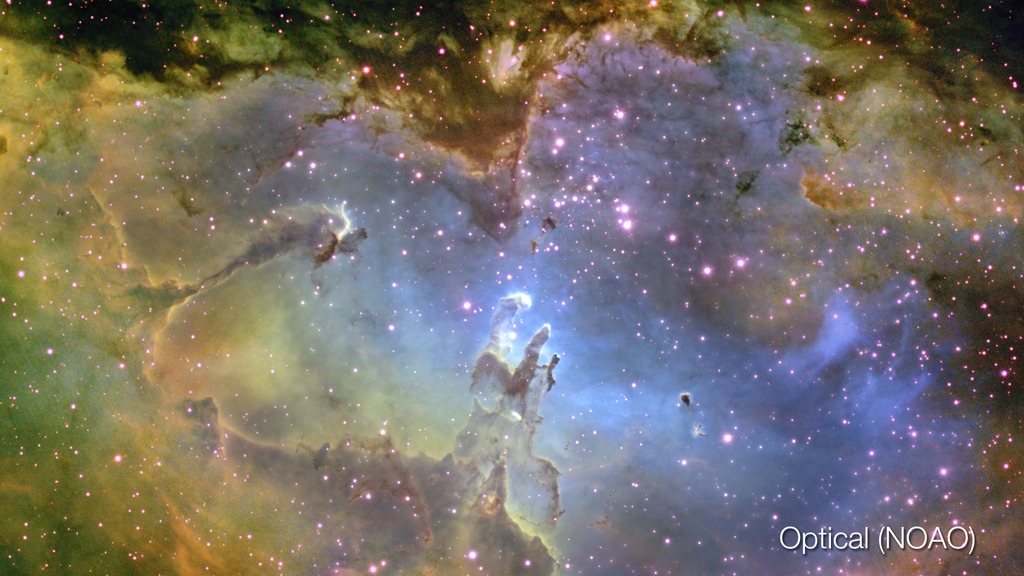

Eagle Nebula: M16 Wide





Related
Credits
Visualizer:
Greg Bacon (STScI)
Image Processing:
Travis A. Rector (University of Alaska Anchorage)
B. A. Wolpa (NOAO/AURA/NSF)
Tracey Hill (AIM Paris-Saclay)
Frédérique Motte (AIM Paris-Saclay)
Nicolas Flagey (NASA/JPL CalTech)
Alberto Noriega-Crespo (NASA/JPL CalTech)
Jeff Linsky (University of Colorado Boulder)
F. Boulanger (XMM-Newton-SOC)
Technical Support:
Leann Johnson (Global Science and Technology, Inc.)
Greg Bacon (STScI)
Image Processing:
Travis A. Rector (University of Alaska Anchorage)
B. A. Wolpa (NOAO/AURA/NSF)
Tracey Hill (AIM Paris-Saclay)
Frédérique Motte (AIM Paris-Saclay)
Nicolas Flagey (NASA/JPL CalTech)
Alberto Noriega-Crespo (NASA/JPL CalTech)
Jeff Linsky (University of Colorado Boulder)
F. Boulanger (XMM-Newton-SOC)
Technical Support:
Leann Johnson (Global Science and Technology, Inc.)
Please give credit for this item to:
Video: NASA, ESA, and G. Bacon (STScI)
Optical image: ESO
Optical image: T.A. Rector (NRAO/AUI/NSF and NOAO/AURA/NSF) and B. A. Wolpa (NOAO/AURA/NSF)
Video: NASA, ESA, and G. Bacon (STScI)
Optical image: ESO
Optical image: T.A. Rector (NRAO/AUI/NSF and NOAO/AURA/NSF) and B. A. Wolpa (NOAO/AURA/NSF)
Far-Infrared image: ESA/Herschel/PACS/SPIRE/Hill, Motte, HOBYS Key Programme Consortium
Near-Infrared image: NASA/JPL-Caltech/N. Flagey (IAS/SSC & A. Noriega-Crespo (SSC/Caltech)
X-ray image: NASA/CXC/U.Colorado/Linsky and ESA/XMM-Newton/EPIC/XMM-Newton-SOC/Boulanger
Short URL to share this page:
https://svs.gsfc.nasa.gov/30960
Missions:
Chandra X-Ray Observatory
Herschel Space Observatory
Spitzer Space Telescope
XMM Newton
Data Used:
Note: While we identify the data sets used in these visualizations, we do not store any further details nor the data sets themselves on our site.
Keywords:
SVS >> Dust
SVS >> Gas
SVS >> HDTV
SVS >> Hydrogen
SVS >> X-ray
SVS >> Hyperwall
SVS >> Star
SVS >> Nebula
SVS >> Ultraviolet Imagery
NASA Science >> Universe
SVS >> Hydrocarbon
https://svs.gsfc.nasa.gov/30960
Missions:
Chandra X-Ray Observatory
Herschel Space Observatory
Spitzer Space Telescope
XMM Newton
Data Used:
Spitzer Space Telescope
NASA JPL/Cal TechHerschel Space Telescope
ESAChandra/Telescope System
National Optical Astronomy Observatory (NOAO)
X-ray Multi-Mirror Mission (XMM-Newton)
European Southern Observatory (ESO)
Keywords:
SVS >> Dust
SVS >> Gas
SVS >> HDTV
SVS >> Hydrogen
SVS >> X-ray
SVS >> Hyperwall
SVS >> Star
SVS >> Nebula
SVS >> Ultraviolet Imagery
NASA Science >> Universe
SVS >> Hydrocarbon
